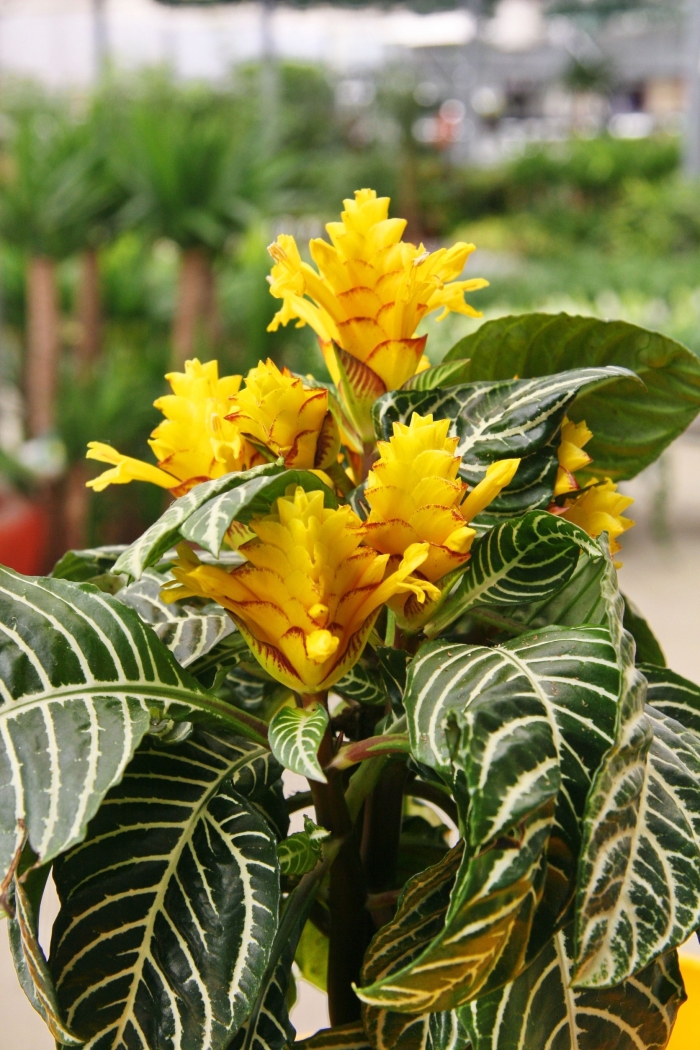






The Zebra plant is a fairly popular plant which is grown for its flower bracts and dark green leaves with prominent white colored veins. So if your looking for a flowering or a foliage plant then this is a plant for either or both.
Flowers: The flowers look similar to other bract type flower heads and grow cone shaped at the tips of a stem with small flowers that grow out of the bract. The amount of flower heads produced depends on the amount of stems, which is more often than not, two - four. The flower bract will last for up to about 6 weeks and the small yellow flowers that grow from the bract last for about a week. The bract is the real attraction rather than the small flowers. A grower can expect flowers after summer.
Foliage: As mentioned above the aphelandra squarrosa displays lovely dark glossy green leaves with prominent whitish colored veins. These leaves grow to about 9 inches long and a few inches wide within the center of the leaf, and they have pointed tips.
Where to display: I thought I would mention where it may be best for you to place and display your Zebra plant because the conditions it needs are quite strict once it has flowered. The best place for them to grow well is within a conservatory or any other glass room because they usually offer more bright light and the ability to control humidity better, which is what this plant likes. However, growing in any well lit room with fairly high humidity and plenty of warmth is worth a go at growing this fussy species.

It's not a strange occurrence when one of these plants does not make it to see the next spring. Seeing to all the above mentioned care instructions (i.e., light, temperature and humidity) will improve the chances of helping a Zebra plant to bloom the following year.
Leaves dropping: The cause here could be dryness of the soil, too much cold air, cold drafts, or even too much sunlight. I would advise you eliminate some of the possible causes that cannot be the cause (eg. winter -not likely to be sunlight) and adjust the conditions to correct the possible causes.
Leaf tips turning brown: The most likely cause here is low humidity. First try misting if you haven’t been and if you have no joy then try to increase the humidity as mentioned above.
Copyright © www.100flowers.win Botanic Garden All Rights Reserved